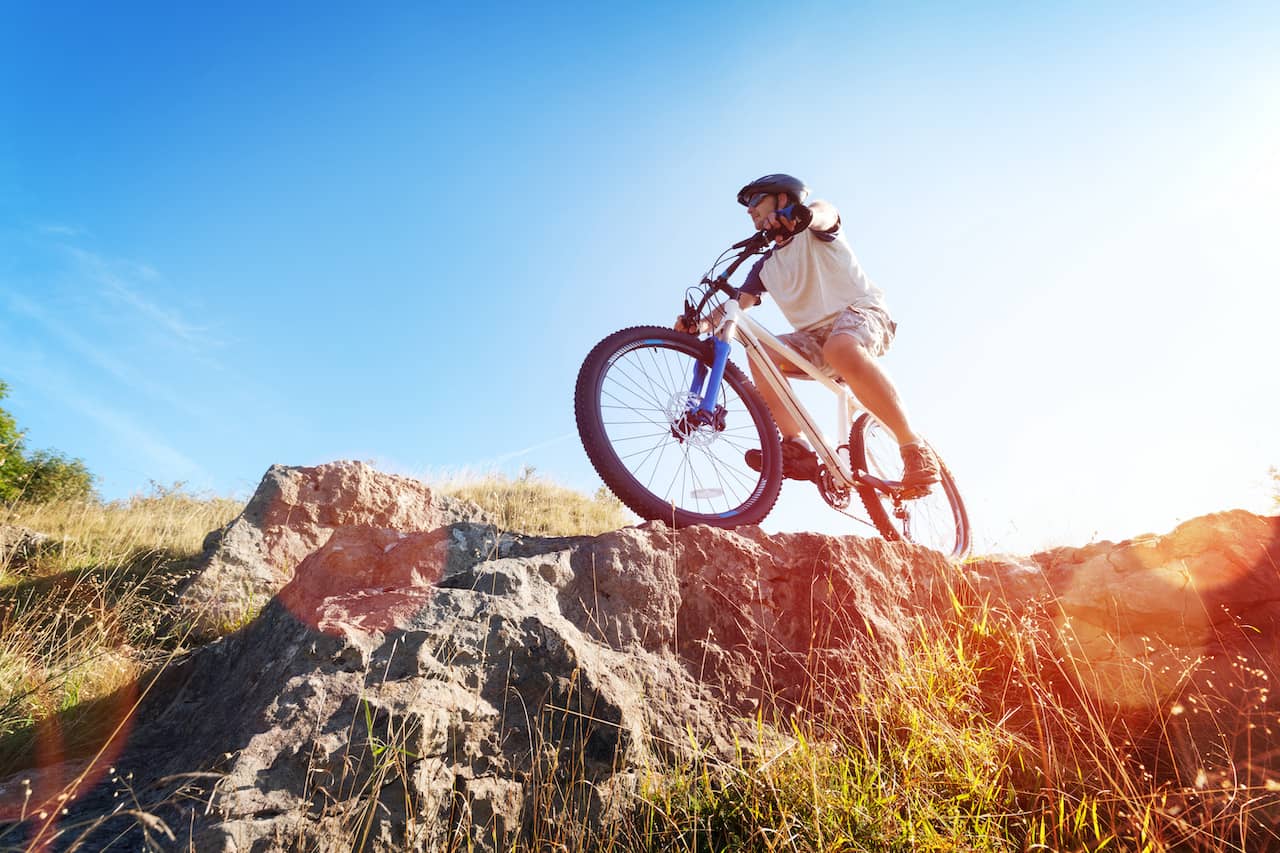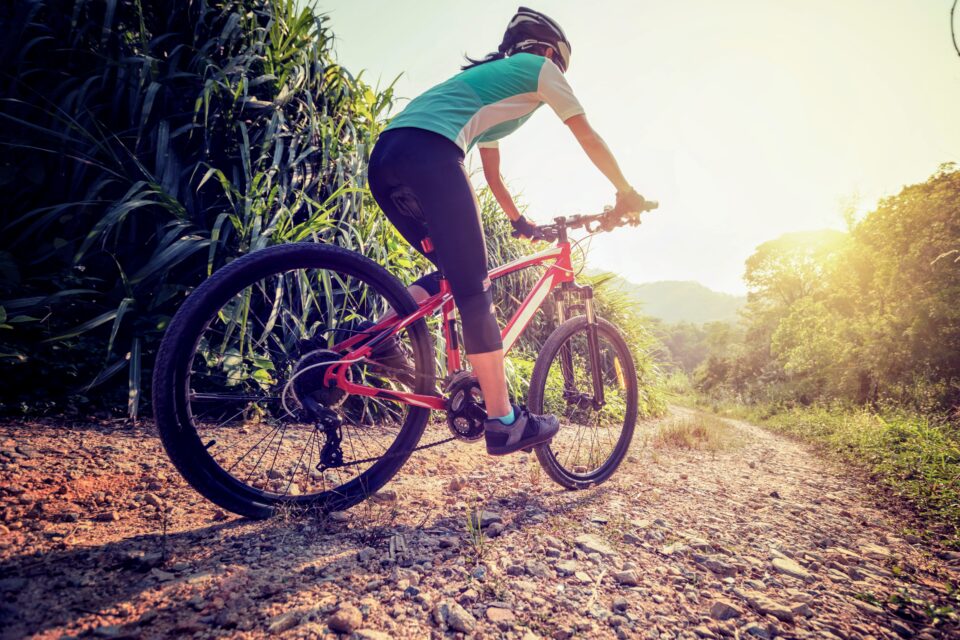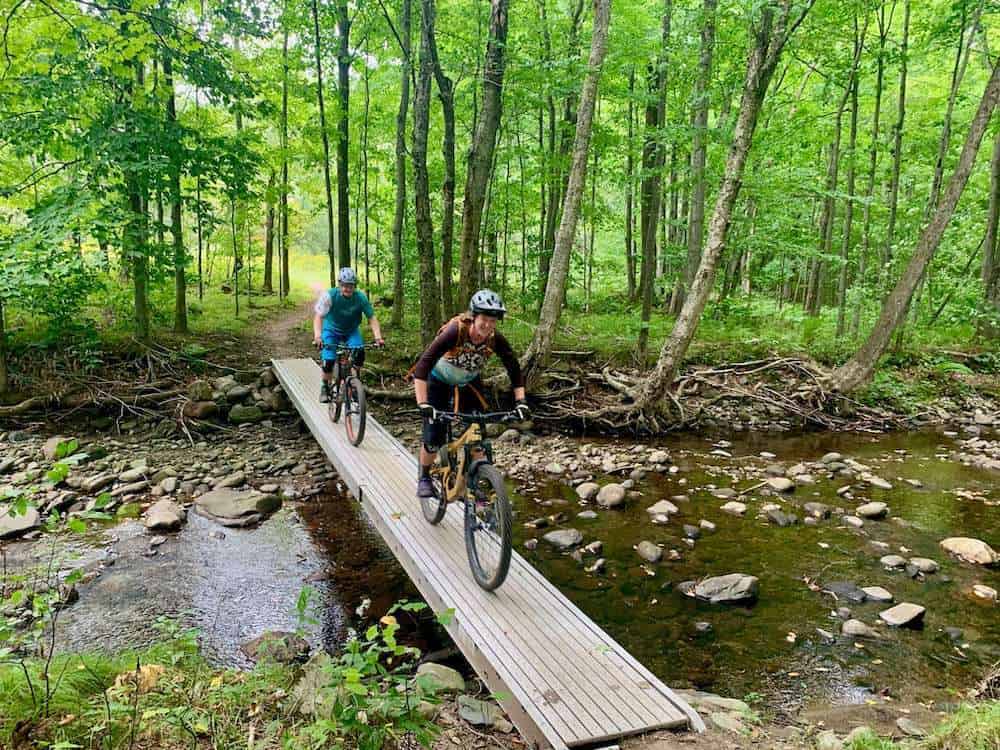Nature offers a plethora of opportunities for seniors to stay active and healthy, with mountain biking emerging as a fantastic way to enjoy the great outdoors while reaping numerous health benefits. Senior mountain biking is not just a recreational activity but also a form of exercise that promotes cardiovascular health, enhances strength and flexibility, and boosts overall well-being. In this blog post, we will examine into the various health advantages that seniors can experience by embracing mountain biking as a part of their fitness routine, highlighting the positive impact it can have on both physical and mental health.
Mountain biking, especially for seniors, offers a multitude of health benefits. Cycling outdoors provides a therapeutic and stress-relieving connection with nature, aiding in maintaining good health, improving quality of life, and increasing overall well-being1. Some key benefits include:
- Improves Heart Health: Regular cycling helps manage heart health by exercising the heart muscle and maintaining its strength and function12.
- Enhances Balance and Coordination: Cycling can improve balance and coordination, crucial for preventing falls and injuries in seniors12.
- Easier Weight Management: Cycling helps maintain a healthy body weight, reduce excess body fat, and prevent obesity-related health issues12.
- Social Opportunities: It provides a social activity that can help combat social isolation and positively impact physical and mental health12.
Mountain biking specifically offers benefits like improved heart health, reduced stress on joints, decreased risk of diseases, improved mood, increased brain power, better balance and coordination, whole-body workout, better sleep, social benefits, and a chance to enjoy nature2. Additionally, recent studies suggest that the health rewards of mountain biking outweigh the associated risks, with injuries often being of low severity3.In summary, mountain biking is a fantastic way for seniors to stay active, enjoy nature, improve physical fitness, boost mental well-being, and engage socially.

Key Takeaways:
- Improved cardiovascular health: Senior mountain biking is an excellent aerobic exercise that helps boost heart health and improve circulation.
- Enhanced strength and balance: Riding on uneven terrain helps seniors develop strength in their legs, core, and arms, while also improving balance and coordination.
- Mental well-being: Spending time in nature and engaging in physical activity can reduce stress, anxiety, and symptoms of depression among seniors.
- Social connection: Mountain biking provides an opportunity for seniors to connect with like-minded individuals, fostering a sense of community and support.
- Joint-friendly exercise: Mountain biking is a low-impact activity that is gentle on the joints, making it an ideal way for seniors to stay active without risking injury.
The Physical Health Advantages of Mountain Biking
Cardiovascular Improvements and Disease Prevention
If you’re looking to improve your cardiovascular health and lower the risk of heart disease, mountain biking is an excellent option. Any form of physical activity that raises your heart rate and gets your blood pumping is beneficial for your heart. Regular mountain biking can help strengthen your heart muscle, improve circulation, and lower blood pressure.
Muscle Strength and Joint Mobility Enhancement
For seniors, maintaining muscle strength and joint mobility is crucial for overall health and quality of life. Mountain biking can help strengthen muscles in the legs, core, and upper body, while also improving flexibility and joint mobility. The act of pedaling and navigating rough terrain challenges muscles to work harder, leading to increased strength and endurance.

Mental Health and Emotional Well-being
Stress Reduction and Mood Enhancement
Some seniors find solace and joy in exploring nature’s gym through mountain biking. The physical exertion and immersive experience in the great outdoors helps in reducing stress levels and enhances mood. The adrenaline rush and sense of accomplishment after conquering a challenging trail can significantly uplift one’s spirits and promote a sense of well-being.
Cognitive Function and the Outdoor Connection
Health studies have shown that engaging in outdoor activities like mountain biking can have a positive impact on cognitive function, especially for seniors. The combination of physical activity, fresh air, and natural scenery stimulates the brain, improves focus, and enhances memory retention. This outdoor connection not only promotes mental sharpness but also provides a refreshing break from daily routines.
Emotional well-being is crucial for overall health and quality of life. By incorporating mountain biking into their routine, seniors can experience an enhancement in emotional well-being through reduced stress, improved mood, and cognitive function. The outdoor setting offers a therapeutic environment that nurtures the mind and soul, leading to a more positive outlook on life.
Help seniors start mountain biking
Here are some essential tips based on the provided search results:
- Stay Loose: Keep your body loose to allow the bike to move beneath you, especially over obstacles like rocks and roots. Maintain a relaxed posture with “pushup arms” and “cowboy legs” to let the bike flow1.
- Maintain Momentum: Holding speed, even on challenging terrain, makes clearing tough sections easier. Momentum is key, so try to maintain it whenever possible1.
- Shift Your Weight: Adjust your weight forward when climbing steep inclines and lean back when descending to maintain traction and balance1.
- Go Easy on the Brakes: Avoid grabbing both brakes tightly; instead, use one or two fingers to modulate speed. Be cautious on tricky sections like rock gardens and corners1.
- Use All the Gears: Anticipate changes in terrain by shifting gears before you need to, helping you maintain momentum and tackle varying landscapes1.
- Set Your Suspension: Understand how to set your bike’s suspension for optimal performance over different terrains. Learn how to lock out or open up your suspension as needed1.
- Look Where You Want to Go: Avoid target fixation by looking past obstacles to where you want to ride. Keep your eyes forward and chin level to the ground for better navigation1.
- Brush Up on Basic Repairs: Learn basic repair skills like fixing a flat tire, repairing a broken chain, or replacing a derailleur hanger to handle mechanical issues that may arise during rides1.
These tips encompass crucial aspects like body positioning, speed control, gear usage, suspension settings, visual focus, maintenance skills, and more to help seniors embark on their mountain biking journey safely and enjoyably.

Safety Measures and Adaptive Strategies for Seniors
Choosing the Right Equipment
Now, when it comes to enjoying the benefits of mountain biking as a senior, choosing the right equipment is crucial. To ensure a safe and comfortable ride, seniors should invest in a well-fitted mountain bike with appropriate features such as wider tires for better stability, front suspension for shock absorption, and a comfortable saddle to reduce strain on the lower back.
Tips for Safe Riding and Injury Prevention
To make the most of your mountain biking experience as a senior, it’s important to follow some key tips for safe riding and injury prevention. This includes wearing a properly fitted helmet at all times, maintaining a controlled speed, especially on downhill sections, and using protective gear such as knee and elbow pads to minimize the risk of injuries.
- Ride within your limits and gradually increase the intensity of your rides to avoid overexertion.
- Regularly inspect your bike for any signs of wear and tear, and ensure it is in proper working condition before each ride.
Prevention of injuries and accidents while mountain biking as a senior is crucial for an enjoyable and sustainable experience. By following these safety measures and adaptive strategies, seniors can continue to reap the numerous health benefits of this exhilarating outdoor activity.
Community and Social Aspects
Building Relationships and Social Support Networks
Many seniors find mountain biking to be an excellent way to build strong relationships and social support networks. Riding with like-minded individuals not only enhances the biking experience but also fosters a sense of camaraderie and friendship. The outdoors provides a beautiful backdrop for conversations and bonding, making it easier for seniors to connect with others who share their passion for adventure and staying active.
Group Rides and Organized Senior Biking Events
On organized group rides and senior biking events, cyclists have the opportunity to challenge themselves, learn new skills, and enjoy the company of peers. An organized ride can provide a sense of purpose and accomplishment, as participants work together to conquer trails and share in the thrill of exploration. These events often include knowledgeable guides, support staff, and safety measures to ensure a fun and rewarding experience for all involved.
The sense of community that forms during group rides can be a powerful motivator for seniors to stay engaged in the sport. Riding alongside others who share a passion for mountain biking can create lasting friendships and a strong sense of belonging. This social aspect of senior mountain biking not only enhances overall well-being but also adds an element of fun and excitement to the experience.
Common mistakes to avoid when starting mountain biking
When starting mountain biking, it’s crucial to avoid common mistakes to ensure a safe and enjoyable experience. Here are some key mistakes to steer clear of:
- Toes on the End of the Pedals: Avoid placing your toes on the end of the pedals as it can lead to instability and discomfort while riding1.
- Pedaling Through Technical Sections: Resist the urge to pedal continuously through technical sections; instead, learn to modulate your pedaling to navigate obstacles smoothly1.
- Not Looking Far Enough Down the Trail: Always look ahead down the trail to anticipate obstacles and choose your line effectively, enhancing your riding experience and safety13.
- Sitting Down Too Much: Avoid sitting down excessively while mountain biking as it can hinder your ability to maneuver the bike effectively over varied terrain1.
- Over Braking: Refrain from overusing your brakes, especially the front brake, as it can lead to loss of control and affect your speed and handling on descents3.
- Not Shifting Gears Properly: Learn how to shift gears smoothly and anticipate gear changes before encountering different terrains to maintain momentum and reduce strain on your bike’s drivetrain3.
- Lack of Tools and Maintenance Knowledge: Always carry essential tools for basic repairs and familiarize yourself with how to use them in case of mechanical issues during rides2.
- Front Brake Fear: Do not fear using your front brake; it provides significant stopping power and control, especially on steep descents. Practice using both brakes effectively for optimal control2.
- Improper Body Positioning: Maintain a proper body position with centered weight, bent elbows, and low center of gravity to enhance balance, control, and stability while riding2.
- Comparing Yourself to Others: Avoid comparing yourself to other riders; focus on enjoying your ride, improving gradually, and riding at your own pace without unnecessary pressure2.
By being mindful of these common mistakes and taking proactive steps to avoid them, beginners can enhance their mountain biking skills, safety, and overall enjoyment on the trails.
Conclusion
To wrap up, senior mountain biking offers a wide range of health benefits that can improve overall well-being. From cardiovascular fitness and muscle strength to mental clarity and social connections, exploring nature’s gym on two wheels can significantly enhance the quality of life for older adults. By hitting the trails and enjoying the great outdoors, seniors can experience a fun and rewarding way to stay active and healthy for years to come.
FAQ
Q: What are the health benefits of senior mountain biking?
A: Senior mountain biking offers numerous health benefits, including improved cardiovascular fitness, increased strength and endurance, enhanced balance and coordination, weight management, and mental well-being.
Q: Is mountain biking a suitable exercise for seniors?
A: Yes, mountain biking can be a great exercise option for seniors as it is low-impact, helps improve joint mobility, and can be tailored to different fitness levels.
Q: How can seniors stay safe while mountain biking?
A: Seniors can stay safe while mountain biking by wearing appropriate safety gear, such as helmets and padding, choosing trails that match their skill level, staying hydrated, and listening to their bodies to avoid overexertion.
Q: What are some tips for seniors getting started with mountain biking?
A: Seniors getting started with mountain biking should start slowly, invest in a good quality bike that fits well, take lessons or join a group for support and guidance, and gradually increase the intensity and duration of their rides.
Q: How often should seniors engage in mountain biking to reap the health benefits?
A: Seniors should aim to mountain bike at least 2-3 times a week to experience the full range of health benefits, but it’s important to listen to their bodies and rest when needed to prevent injuries or burnout.


